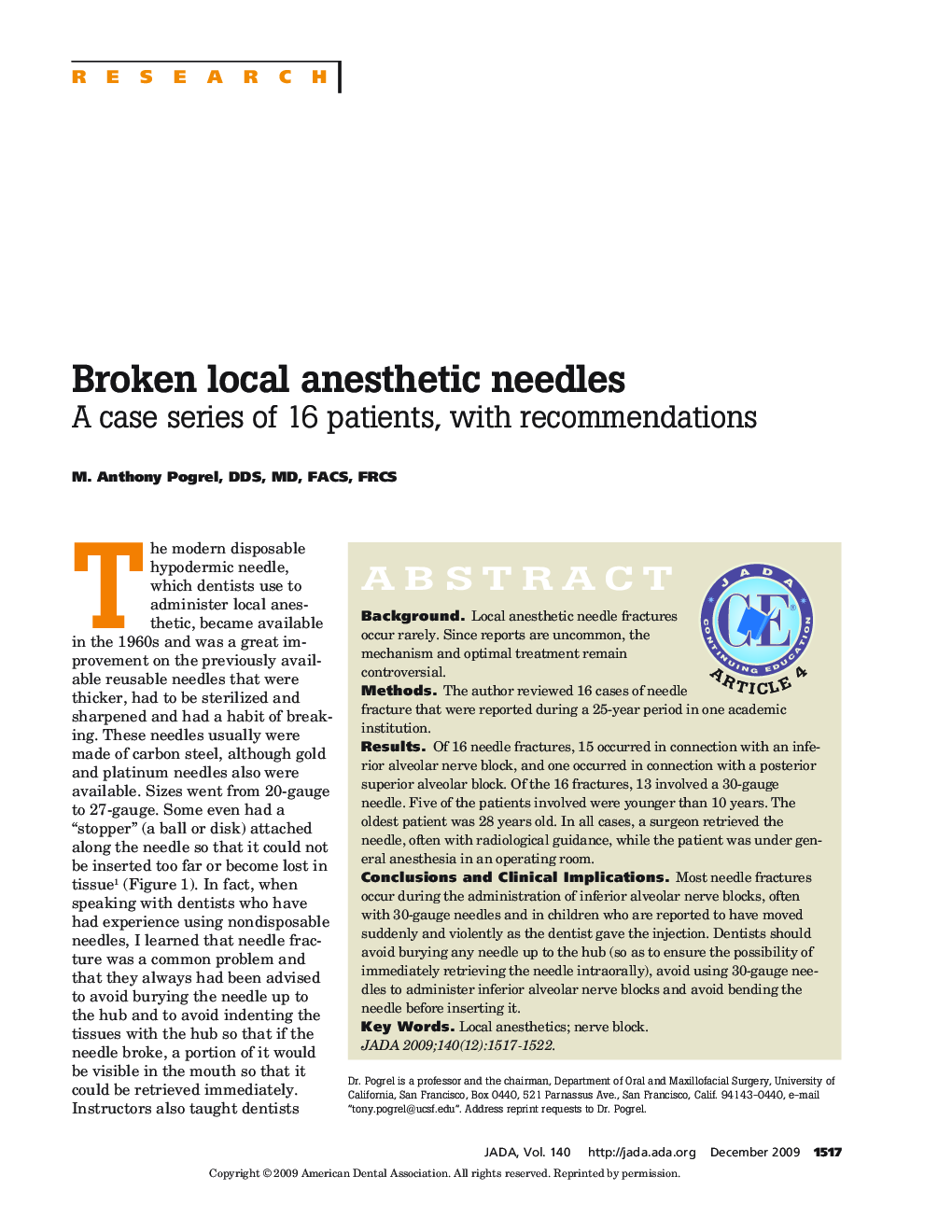| Article ID | Journal | Published Year | Pages | File Type |
|---|---|---|---|---|
| 3138984 | The Journal of the American Dental Association | 2009 | 6 Pages |
ABSTRACT BackgroundLocal anesthetic needle fractures occur rarely. Since reports are uncommon, the mechanism and optimal treatment remain controversial.MethodsThe author reviewed 16 cases of needle fracture that were reported during a 25-year period in one academic institution.ResultsOf 16 needle fractures, 15 occurred in connection with an inferior alveolar nerve block, and one occurred in connection with a posterior superior alveolar block. Of the 16 fractures, 13 involved a 30-gauge needle. Five of the patients involved were younger than 10 years. The oldest patient was 28 years old. In all cases, a surgeon retrieved the needle, often with radiological guidance, while the patient was under general anesthesia in an operating room.Conclusions and Clinical ImplicationsMost needle fractures occur during the administration of inferior alveolar nerve blocks, often with 30-gauge needles and in children who are reported to have moved suddenly and violently as the dentist gave the injection. Dentists should avoid burying any needle up to the hub (so as to ensure the possibility of immediately retrieving the needle intraorally), avoid using 30-gauge needles to administer inferior alveolar nerve blocks and avoid bending the needle before inserting it.
